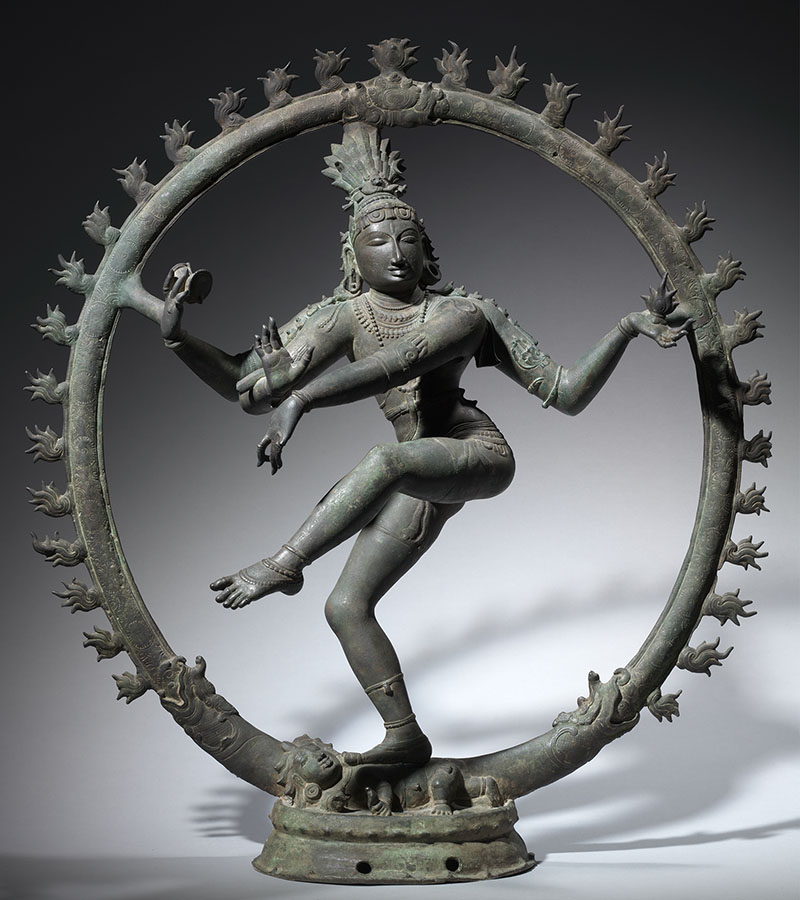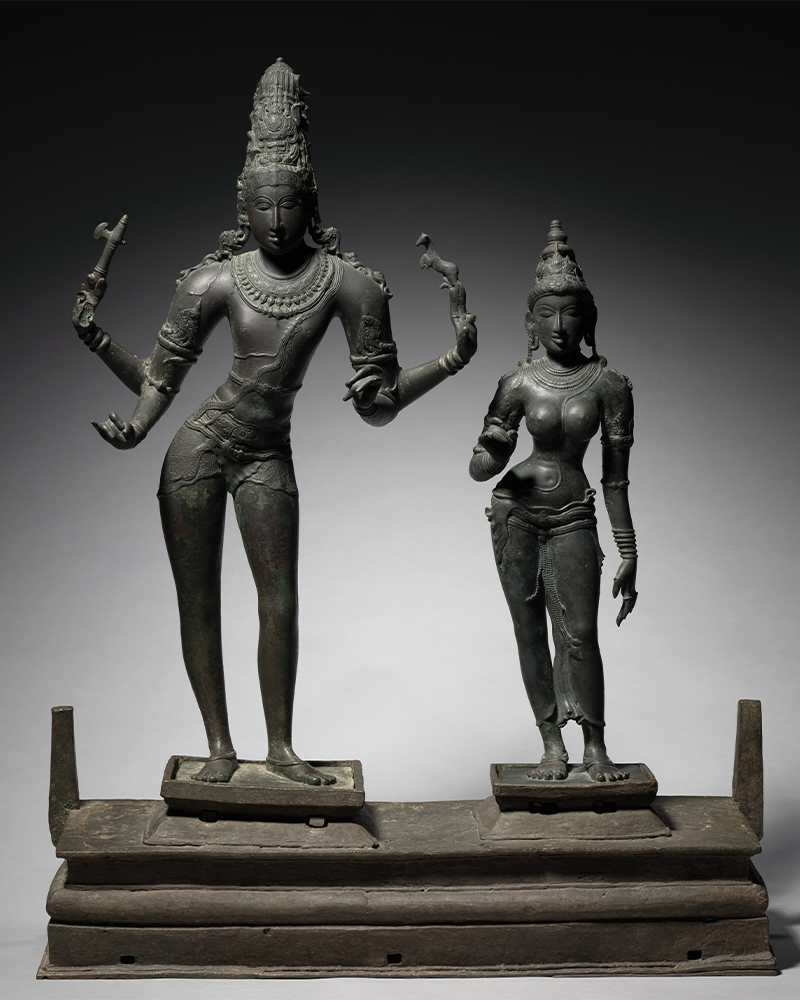ARTICLE
Chola Bronze Sculptures
The production of bronzes in early medieval Tamil Nadu was linked with political and religious developments. The second half of the tenth century CE saw the emergence of the Cholas as a major power in the region, and many early Chola monarchs and family members patronised existing shrines such as that at Chidambaram, associated with a dancing form of Shiva. The resulting prominence of Chidambaram then led to the production of a number of Nataraja images: one of the most common depictions of Shiva from this period was of the god in ananda tandava (‘the dance of bliss’), with his left leg thrust across his body. Another popular figure was of Shiva performing the nadanta (dance of destruction), in the same posture but grasping a damaru drum, dancing upon a vanquished dwarf, and wearing a snake around his neck. The god was also frequently depicted as Dakshinamurti, Vrishabhavahana and Tripuravijaya, as well as in groups with Parvati and their son Skanda, such as the Kalyanasundaramurti or Somaskanda. Bronze imagery of the period also includes depictions of Krishna, especially as a young boy dancing on the head of the serpent-king Kaliya, as well as Shaivite saints such as Karaikkal Ammaiyar and Manikkavacakar. Such sculptures were commissioned not only by Chola dynasty monarchs directly but also by officials and members of the elite within the empire.
Bronzes also grew to become a crucial aspect of temple worship as a result of evolving ideas of the role of the enshrined god. While the deity of the temple was initially believed to be resting only within the garbhagriha or sanctum, from the sixth or seventh century onwards, portable idols became an important part of Tamil religious life and remain so to this day. These idols are taken out on processions, giving audiences to their devotees, inspecting the temple premises, or participating in festivities celebrating their birth and marriage anniversaries. While these idols were predominantly made of wood for several centuries, metal processional idols became popular under Chola rule.
Artisans in Tamil Nadu continue to produce bronze sculptures in a tradition descended from that of the early medieval period, and bronzes continue to be extensively used in temple processions in the region.
Bibliography
Dehejia, Vidya. Indian Art. Phaidon, 1997.
Harle, J.C. “The Early Cola Period.” The Art and Architecture of the Indian Subcontinent. New Haven and London: Yale University Press, 1986.
Huntington, Susan and John C. Huntington. “Later Schools of the Deccan and the South.” The Art of Ancient India: Buddhist, Hindu, Jain. University of Michigan, 1985.
Kaimal, Padma. “Early Cōḻa Kings and “Early Cōḻa Temples”: Art and the Evolution of Kingship.” Artibus Asiae, vol. 56 (½), 1996. http://www.jstor.org/stable/3250104.








